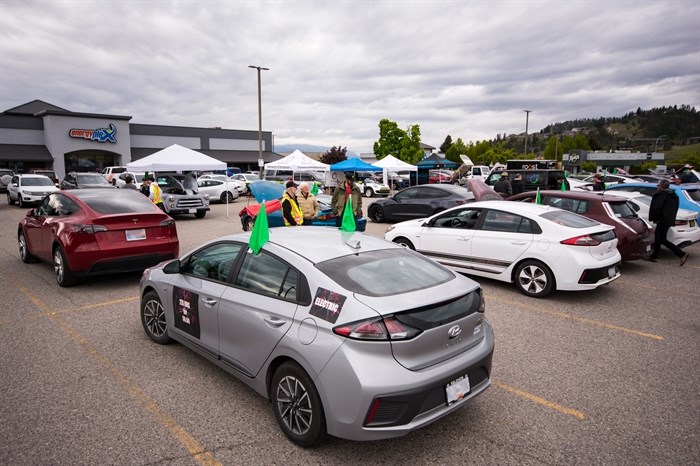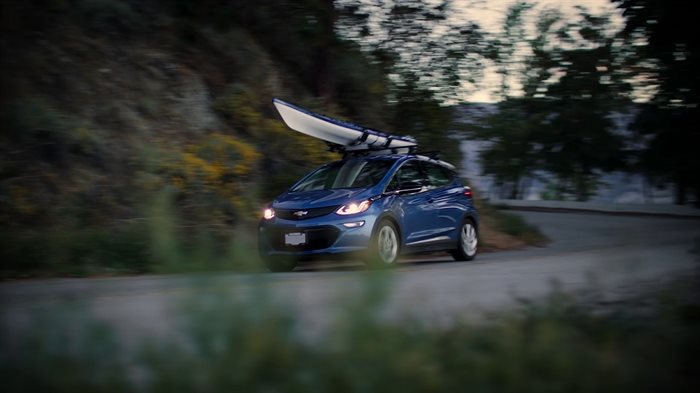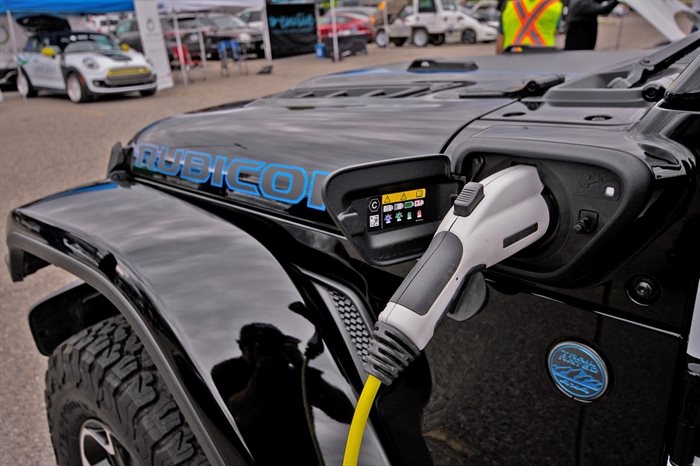Kamloops, Okanagan poised for electric car surge but lagging far behind
B.C. has the highest use of electric vehicles in North America.
Give the credit for that to the Lower Mainland which has 75% of the nearly 80,000 EV’s registered in B.C. in 2021, according to B.C. Government figures.
The Thompson-Okanagan, which has about 12% of the province’s population, only has about 4,100 registered EV’s which is a mere 5% of the provincial total.
“I think it’s going really well there,” Michael Stanyer, spokesperson for Plug In B.C. told iNFOnews.ca. “We attended an event there in May that was organized by an informal collection of EV owners and clubs and the turnout was tremendous. There were tons of people with new vehicles that came to show them off, people who had an older EV but maybe had another on order or just people coming by to check out the cars.”
Plug In B.C., on its website, says it “strives to be a central source for information on programs and initiatives that are supporting the electric vehicle market.”
The entire network of EV charging stations throughout the country has grown significantly in the last few years, especially in places like Kamloops because it’s on Highway 1 and Kelowna with its high population density.
But, what the Thompson-Okanagan is lacking is a Tesla dealership, despite having plenty of the electric car maker's vehicles already in the city.
“There is a proliferation of Teslas throughout the province, even though people have to go to Vancouver to pick one up," Stanyer said.
Tesla is the market leader when it comes to EVs even though they are some of the most expensive such cars on the market.
The base Model 3 starts at about $60,000, according to a Government of B.C. website. They top out at more than $150,000 and are attractive to those who might otherwise buy a BMW or Mercedes, Stanyer said.
But that’s not always the case.
“There is also a market for people who drive a lot and have just crunched the numbers and realize that they save so much on fuel by driving electric that they can afford to have a more upscale car,” Stanyer said. “When you’re saving a few hundred dollars a month on fuel and maybe the financing works out around the same, then people have an opportunity to get a much better car than they would otherwise, paying about the same amount. I think that’s pretty compelling.”
The entry level cars are things like the Nissan Leaf or Chevrolet Bolt, starting around $38,000, but still delivering an exciting option, Stanyer said.
“When you drive an electric car, it is just so smooth and so luxurious that even something like the utilitarian Chevrolet Bolt feels more like a luxury vehicle than a small hatchback,” he said. “A lot of the feedback we get when we do test drive events is that people just like the sensation of driving the electric cars. It just feels better.
“They have tons of power. When we do these test drive events I wish I could send them driving up the Coquihalla in an electric car just to feel the smooth, seemingly endless, power on tap that they’ll get out of pretty much any electric car. People are pretty impressed by that.”
Stanyer, who lives in Courtenay, used to live in Prince George so knows electric cars can handle the cold – they don’t have oil and other fluids in them that need to be warmed up – and can be charged at home with a regular 110 Volt outlet.
That home charge can take hours so one of the key things making EVs more attractive is the proliferation of fast chargers. Tesla even has its own super-charger system that can do the job in 10 to 12 minutes.
B.C. is also one of the leaders in rebate programs so that not only makes them more attractive to buyers but, manufacturers are also geared up to ship more vehicles to this market.
Another factor, of course, is the cost of charging is just a fraction of the price of gasoline.
There is still work to be done on the charging network, in three areas, Stanyer said.
One is to reach into more remote parts of the province, like Highway 20 down to Bella Coola. Another is to replace the older, slower, public chargers (those can take 40 minutes for a charge) and there’s a need for more charging stations in larger, busier cities like Kelowna where there may be lineups at busy times.
Even so, Stanyer recently drove from Courtenay to Dawson Creek in a Tesla that had to be charged only three times.
Unlike four or five years ago when crossing Canada in an EV was a “science project,” the cars now do all the work.
“The car usually does the planning for you,” Stanyer said. “You’ll tell it where you’re going and it will pick out charging stations along the way and calculate what charge you will be at when you reach each charging station. It’s pretty easy, once you’re in the car, to just head out on a trip. On a lot of highways in B.C. there are just so many charging stations that, in a modern car, you don’t have to do meticulous planning.”
In 2021, 13% of all light duty vehicles sold in B.C. were EVs. That’s up from 9.4% the year before and 1% in 2016.
And, particularly given the attitude of the younger generation, that number is going to continue to grow dramatically even in advance of federal regulations that say all new vehicles have to be zero emission by 2035.
“There’s a lot of enthusiasm all over the province, especially from young people,” Stanyer said. “When we go to car shows there’s teenagers and younger kids that are all over these things pressuring their parents hard to go for a test drive and think about getting electric cars.”
It's not just that young people may be more environmentally sensitive than their parents,the marketing of EVs, especially Teslas, is very effective.
“It amazes me that we will be at these car shows and kids who are clearly not old enough to drive yet will get into a Tesla and they know everything about the car,” Stanyer said. “They watched so many YouTube videos. They know all the different gadgets that it has and all the menu systems and all of that stuff. It’s pretty remarkable the brand awareness that Tesla has. That does get people really excited about the cars.”
There may come a time that gasoline filling stations will become as hard to find as the EV chargers were just a few years ago.
But, that could be a long ways off.
“It’s a transition that will take decades,” Stanyer said. “It’s a long process and it’s a big deal. It’s changing one of the fundamental ways that we live our lives and go to work and get around.”
People wanting a first hand look at EVs and other low energy technology can check out the Clean Energy Expo put on by First Things First Okanagan. It runs from 10 a.m. to 4 p.m. Oct. 1 at the Penticton Lakeside Resort.
To contact a reporter for this story, email Rob Munro or call 250-808-0143 or email the editor. You can also submit photos, videos or news tips to the newsroom and be entered to win a monthly prize draw.
We welcome your comments and opinions on our stories but play nice. We won't censor or delete comments unless they contain off-topic statements or links, unnecessary vulgarity, false facts, spam or obviously fake profiles. If you have any concerns about what you see in comments, email the editor in the link above.






